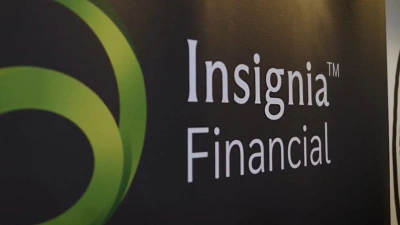What do planners do with their super?
Superannuation is most likely to be the largest asset a client will have outside of their own home.
It is not surprising when you consider Australia has a 10-year history of compulsory superannuation and is world renowned for its three-tiered superannuation system based on the Super Guarantee (currently at eight per cent, moving to nine per cent in July), voluntary savings and social benefits.
Assisting a client in selecting the most appropriate superannuation investment vehicle comes down to a decision on cost and the investment menu on offer. It is a personal decision formed by the client’s investment horizon, risk profile, tax and financial situation.
Most financial planners advise clients to invest in either retail superannuation funds, master trusts or self-managed superannuation funds (SMSFs) to manage and maximise their super.
But what do financial planners do with their own superannuation?
According to Guest McLeod senior planner Timothy Rossell, the criteria used by a planner to select a superannuation investment vehicle for themselves is no different from that used to advise a client.
“They make the decision based on what they want to achieve, the investment universe they want to access and cost,” he says.
Rossell says at Guest McLeod, planners invest across the range of investment vehicles, depending on which one best suits their needs.
That said, it is very powerful to be able to say to a client that the strategy being advised is the same superannuation strategy the planner personally adopts.
However, what all the staff at Guest McLeod have in common is a corporate superannuation fund established so that all Super Guarantee payments go straight to one place without the employer having to make out separate cheques for each of the employees’ different investment funds.
Rossell says such an arrangement is not unusual in larger dealer groups with many employees.
“Most would have a corporate fund and in that there would be around 20 per cent of employees. Senior people may have their own superannuation fund and direct contributions to either a do-it-yourself (DIY) fund or a super wrap,” he says.
The reason he says senior planners may have different superannuation arrangements is because they may have greater amounts of money to invest and want a larger investment universe.
Further, most corporate funds are pooled superannuation trusts (PSTs), where unrealised capital gains are taxed as you go. In DIY superannuation vehicles, investors can access funds on a non-tax basis and accrue the tax liability and pay at a later date.
These are the same reasons why financial planners may also advise their clients to establish a DIY superannuation fund.
A more flexible approach to Reasonable Benefit Limits (RBL) may also be an important consideration for both planners and clients.
“A DIY leaves a lot more doors open to manage RBLs,” Rossell says.
However, Rossell is not entirely convinced of the advantages of DIY superannuation funds for all investors, let alone all planners.
“A lot of DIYs are designed for financial planners and accountants at heart,” he says.
Independent financial advisory group Haintz Financial Services, is keen to replicate for its planners the super advice it gives to its clients.
“We are firmly of the opinion that whatever we recommend to the client, we’ve got to do ourselves,” Haintz Financial Services director David Haintz says.
He says following a review of the business last year, the planning group has streamlined its superannuation product offering down to a non-discretionary master trust.
While in the past the group did manage DIY superannuation funds on behalf of its clients, Haintz says in the end they were managing up to 60 of them, which proved very time consuming for the business.
“So we changed the model to all clients,” Haintz says.
This means that while in the past some of the planners had DIY superannuation arrangements, they now too are invested in the non-discretionary master trust.
Haintz says the decision to move to the fund-of-fund type structures for superannuation investments of both its clients and planners was seen as a winning situation for the client, the staff and business, as well as for the shareholders in the business.
“It is the only model that is going to add up for all parties,” he says.
Melbourne-based private client portfolio management firm First Samuel is a small planning office with eight staff. It provides wealth planning services for high-net-worth clients and does not invest in managed funds.
The superannuation solutions the planning office provides for its clients are only self-managed superannuation funds, and reflects its non-managed fund philosophy.
According to First Samuel’s managing director Anthony Starkins, by investing in a managed fund-of-fund investment, clients cannot manage either their investment or their tax.
“There is a significant disadvantage because tax is investors largest expense,” Starkins says.
He says for smaller investors with under $100,000 to invest, the diversification provided in a managed fund can provide all the benefits an investor may need but for higher-net-worth clients discretionary funds are more beneficial, as planners can extract greater levels of value.
Recommended for you
A financial advice firm has been penalised $11 million in the Federal Court for providing ‘cookie cutter advice’ to its clients and breaching conflicted remuneration rules.
Insignia Financial has experienced total quarterly net outflows of $1.8 billion as a result of client rebalancing, while its multi-asset flows halved from the prior quarter.
Prime Financial is looking to shed its “sleeping giant” reputation with larger M&A transactions going forward, having agreed to acquire research firm Lincoln Indicators.
An affiliate of Pinnacle Investment Management has expanded its reach with a London office as the fund manager seeks to grow its overseas distribution into the UK and Europe.














